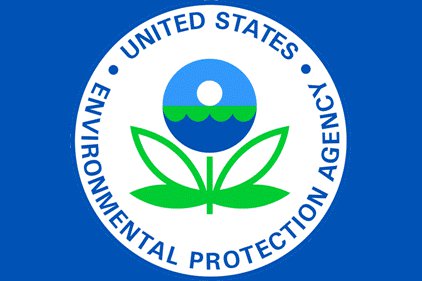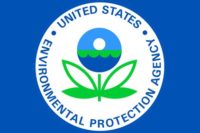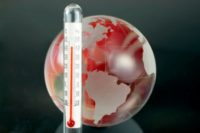 About a month ago, I took a trip to the Cleveland Clinic. I met a lot of great people, but one stood out—even if he needed to stand on a chair to do it. Parker Frey is 10 years old. He’s struggled with severe asthma all his life. His mom said despite his challenges, Parker’s a tough, active kid—and a stellar hockey player.
About a month ago, I took a trip to the Cleveland Clinic. I met a lot of great people, but one stood out—even if he needed to stand on a chair to do it. Parker Frey is 10 years old. He’s struggled with severe asthma all his life. His mom said despite his challenges, Parker’s a tough, active kid—and a stellar hockey player.
But sometimes, she says, the air is too dangerous for him to play outside. In the United States of America, no parent should ever have that worry.
That’s why EPA exists. Our job, directed by our laws, reaffirmed by our courts, is to protect public health and the environment. Climate change, fueled by carbon pollution, supercharges risks not just to our health, but to our communities, our economy, and our way of life. That’s why EPA is delivering on a vital piece of President Obama's Climate Action Plan.
I want to thank Janet McCabe, our Acting Assistant Administrator at the Office of Air and Radiation, and the entire EPA team who worked so hard to deliver this proposal. They should be very proud of their work; I know I am.
Today, EPA is proposing a Clean Power Plan that will cut carbon pollution from our power sector, by using cleaner energy sources, and cutting energy waste.
| "The science is clear. The risks are clear. And the high costs of climate inaction keep piling up." |
Although we limit pollutants like mercury, sulfur, and arsenic, currently, there are no limits on carbon pollution from power plants, our nation’s largest source. For the sake of our families’ health and our kids’ future, we have a moral obligation to act on climate. When we do, we’ll turn climate risk into business opportunity, we’ll spur innovation and investment, and we’ll build a world-leading clean energy economy.
The science is clear. The risks are clear. And the high costs of climate inaction keep piling up.
Rising temperatures bring more smog, more asthma, and longer allergy seasons. If your kid doesn’t use an inhaler, consider yourself a lucky parent, because 1 in 10 children in the U.S. suffers from asthma. Carbon pollution from power plants comes packaged with other dangerous pollutants like particulate matter, nitrogen oxides, and sulfur dioxide, putting our families at even more risk.
Climate inaction is costing us more money, in more places, more often. 2012 was the second most expensive year in U.S. history for natural disasters. Even the largest sectors of our economy buckle under the pressures of a changing climate, and when they give way, so do businesses that support them, and local economics that depend on them.
Rising seas, rising costs
As our seas rise, so do insurance premiums, property taxes, and food prices. If we do nothing, in our grandkids’ lifetimes, temperatures could rise 10 degrees and seas could rise 4 feet. The S&P recently said climate change will continue to affect credit risk worldwide.
This is not just about disappearing polar bears or melting ice caps. This is about protecting our health and our homes. This is about protecting local economies and jobs.
The time to act is now. That’s why President Obama laid out a Climate Action Plan—to cut carbon pollution, build a more resilient nation, and lead the world in our global climate fight.
Today’s proposed Clean Power Plan is a critical step forward. Before we put pen to paper, we asked for your advice. Our plan was built on that advice—from states, cities, businesses, utilities, and thousands of people. Today kicks off our second phase of crucial engagement.
Two objectives
Shaped by public input, present trends, proven technologies, and common sense, our Plan aims to cut energy waste and leverage cleaner energy sources by doing two things: First, setting achievable, enforceable state goals to cut carbon pollution per megawatt hour of electricity generated. And second, laying out a national framework that gives states the flexibility to chart their own, customized path to meet their goals.
All told, in 2030 when states meet their goals, our proposal will result in 30 percent less carbon pollution from the power sector across the U.S. when compared with 2005 levels. That’s like cancelling out annual carbon pollution from two thirds of all cars and trucks in America. And if you add up what we’ll avoid between now and 2030—it’s more than double the carbon pollution from every power plant in America in 2012.
As a bonus, in 2030 we’ll cut pollution that causes smog and soot 25 percent more than if we didn’t have this plan in place. The first year that these standards go into effect, we’ll avoid up to 100,000 asthma attacks and 2,100 heart attacks—and those numbers go up from there.
That means lower medical bills and fewer trips to the emergency room, especially for those most vulnerable like our children, our elderly, and our infirmed. This is about environmental justice, too, because lower income families, and communities of color are hardest hit.
Now let me get into the details of our proposal.
This plan is all about flexibility. That’s what makes it ambitious, but achievable. That’s how we can keep our energy affordable and reliable. The glue that holds this plan together, and the key to making it work, is that each state’s goal is tailored to its own circumstances, and states have the flexibility to reach their goal in whatever way works best for them.
First, to craft state goals, we looked at where states are today, and we followed where they’re going. Each state is different, so each goal, and each path, can be different.
Second, the goals spring from smart and sensible opportunities that states and businesses are taking advantage of right now. From plant to plug.
Let me tell you about the kinds of opportunities I’m talking about:
We know that coal and natural gas play a significant role in a diverse national energy mix. This Plan does not change that—it recognizes the opportunity to modernize aging plants, increase efficiency, and lower pollution. That’s part of an all-of-the-above strategy that paves a more certain path for conventional fuels in a carbon constrained world.
States also have the opportunity to shift their reliance to more efficient, less polluting plants. Or, instead of low carbon sources, there’s always the opportunity to shift to “no” carbon sources like nuclear, wind, and solar. Since 2009, wind energy in America has tripled and solar has grown ten-fold. Our nuclear fleet continues to supply zero carbon baseload power. Homegrown clean energy is posting record revenues and creating jobs that can’t be shipped overseas.
More efficiency, less electricity
Those are all opportunities at plants, but what about at the plug? Existing technologies can squeeze the most out of every electron, helping us use electricity more efficiently in our homes and businesses. More efficiency means we need less electricity to cool our refrigerators or charge our phones. For the fuel we burn, let’s get the most bang for our buck.
All of these options are not new ideas. They’re based on proven technologies, proven approaches, and are part of the ongoing story of energy progress in America. Our plan doesn’t prescribe—it propels that progress already underway.
And like I said, there’s no one-size-fits-all solution. States can pick from a portfolio of options to meet regional, state, and community needs—from ones I mentioned, or the many more I didn’t, and in any combination. It’s up to states to mix and match to get to their goal.
If states don’t want to go it alone, they can join up with a multi-state market based program, or make new ones. More players mean more flexibility and lower costs. States have flexibility not just in means and method, but in timeline, too. Under our proposal, states have to design plans now, and start reducing so they’re on a trajectory to meet their final goals in 2030. That kind of flexibility means a smooth transition to cleaner power that doesn’t leave investments behind.






